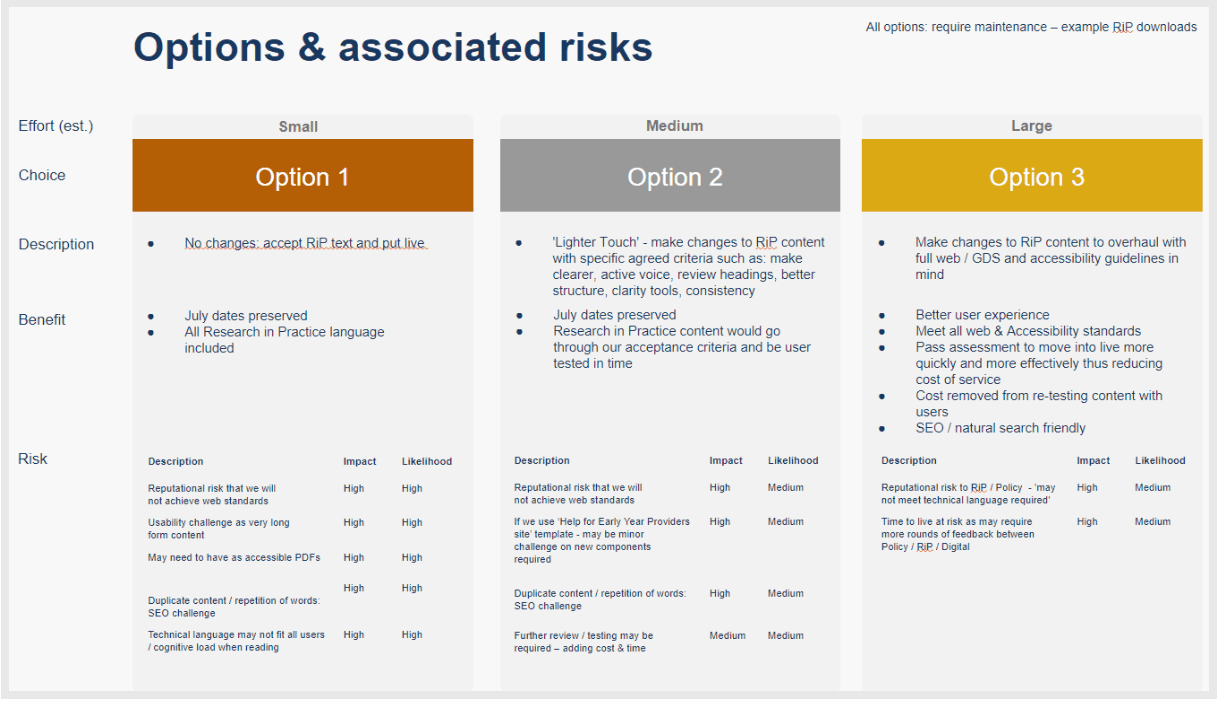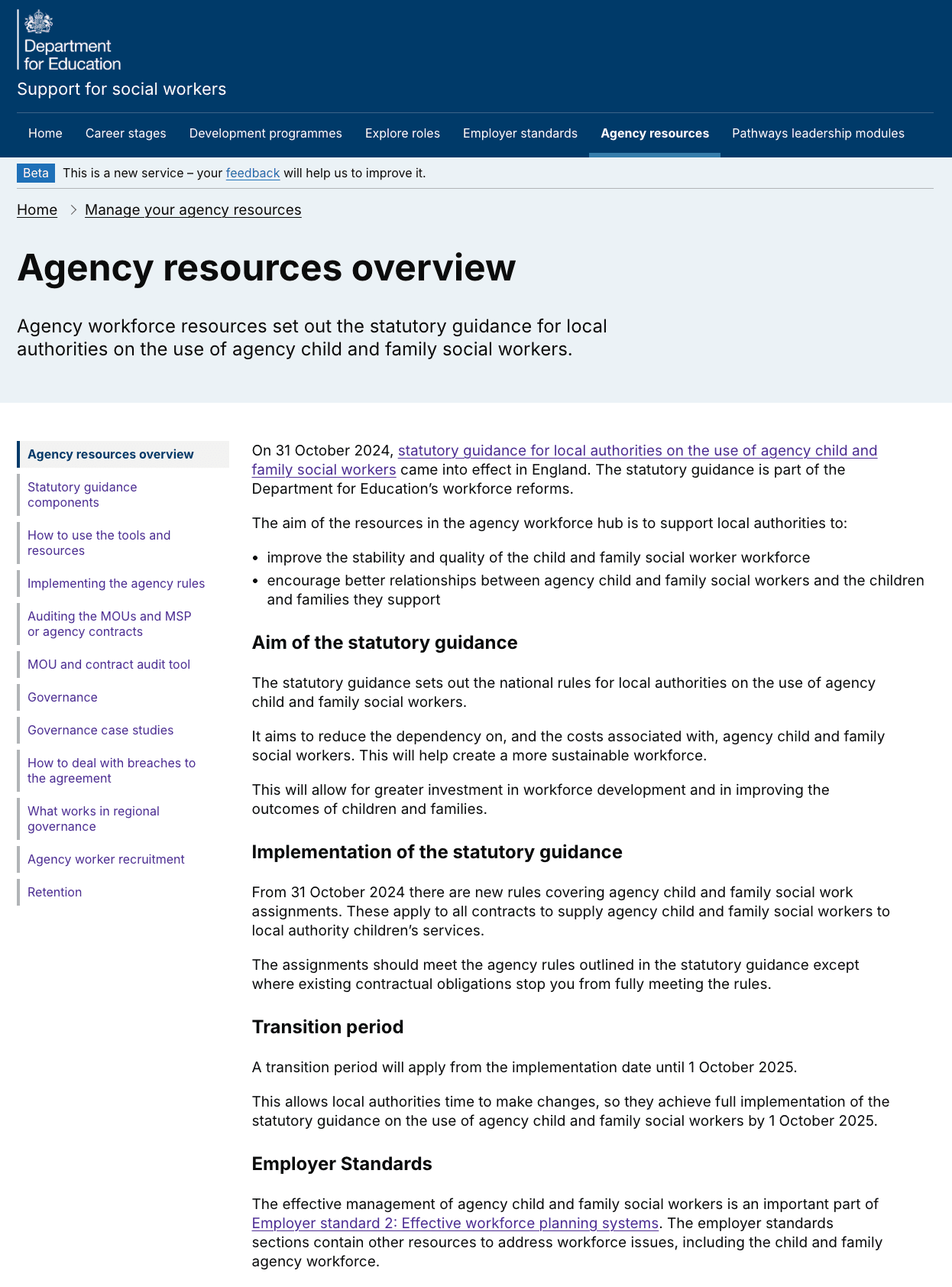The user need
Social work leaders need to understand and implement statutory guidance for local authorities on the use of agency child and family social workers.
The ‘Support for social workers’ (SfSW) team worked with Research in Practice, subject matter experts (SMEs), who work with and for professionals in the social care sector. We worked together to develop tools and resources that support the implementation of the employer standards and agency rules.
The challenge for user-centred design
While the original material was detailed and information-rich, it had to be reformatted so that it was suitable for online publication. For example, the of inclusion in-depth background information on various studies, and the heavy use of references meant that it was better suited for academic study than for web-based browsing.
Through a series of collaborative sessions with the SMEs, the SfSW team sought to simplify and streamline the original content while retaining its meaning and substance.
This included resources to help social work leaders:
- record data and check their readiness to meet employer standards
- meet employer standards and support their permanent workforce
- manage their agency workforce
Research
The SMEs' insights helped to create the standards and resources in their original form. Our respective digital teams worked together to refine and transform that content into the published versions.
Using subject matter experts and their knowledge of the language used by this sector meant that we created content and tools that users understood and could access easily. This was reflected in further research sessions, where users fed back saying they felt clear on the language and structure of the service.
SfSW’s experience of DfE style and content principles meant we were able to make plain English recommendations and layout changes to aid understanding. With both teams’ expertise involved, we produced clear, navigable standards and accessible resources.
For user research, we produced an effective and structured prototype, this involved:
- identifying the most suitable GDS patterns and components to meet user needs
- understanding and being clear on the user need and creating design solutions to meet these needs
- investigating other Department for Education (DfE) design solutions
- building an integrated Figma prototype to save time
- developing customised components to replicate interactivity
How we worked
DfE policy and SMEs collaborated to produce draft guidance and resources. The draft content was shared with the SfSW user-centred design (UCD) team, who suggested wording and structural changes. These helped to bring the guidance in line with DfE style and design guidelines, and accessibility rules.
We sought to retain the technical language familiar to our users, while providing plain English explanations for supporting context.
Open and respectful content reviews gave everyone the opportunity to build an understanding of the needs behind the content, and a user-centred approach was a central part of our work.
Our approach
The approach we took is illustrated in Option 2. This was the silver option. We proposed eliminating repeated sections and responded to user feedback, which highlighted a need for shorter, more straightforward content. For example, we reduced employer standard 3 from 8,000 words to 4,600.

We also worked with the SMEs to help design accessible tools. We provided guidance for:
- colour contrast
- merged cells in spreadsheets
- using macros
- using proprietary software
- other accessibility concerns
Users also have the opportunity to download resources in an alternative format by contacting us.
For the written content we:
- sought senior content and policy advice on how to sensitively word anti-discrimination topics
- reformulated question and answer sections into standard prose for consistency
- published a notice for each downloadable tool that invites users to request an alternative format if needed
Keeping a decision log
It was important for us to record changes in a decision log throughout the content production process. This would help to explain the rationale behind any amends and provide evidence of agreement between the SMEs and SfSW teams.
Publishing the content
In October 2024, we published:
Downloadable agency tools
With help from our technical team, we’ve published documents that allow those using assistive technologies to request alternative formats that meet their needs.
The tools are:
- Agency worker readiness assessment tool
- Data collection checklist
- Agency worker action plan template
- Agency worker induction checklist
Why we used our chosen designs
After doing desk research, we found that the volume of content was best suited to longer-form guidance that we split up into navigable sections. We used a left-side navigation menu to help break up the content and to help users quickly locate the areas they wanted to find out more about.

What next
We’ll use feedback and analytics data to continue iterating the content to make it simpler and easier to use. We provided tracking links that policy colleagues could use as part of the communications plan for stakeholders.
We are continuing to find out more about the user’s language and the journeys they take. This is to improve our understanding surrounding the findability of content and identify areas of the content which may need updating.
We are also looking at design consistency across the pages within the website to better support the user’s navigation.
